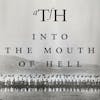Into the Mouth of Hell

A special episode of A Time for Horses, recorded live on the campus of Post University in Waterbury, Connecticut, on October 25, 2023, the 169th anniversary of the Battle of Balaclava.
A rising tide lifts all boats. We rise by lifting others. It’s a win-win situation. Do unto others as you would have them do unto you.
The word compassion has been a part of the English language since the 15th century. It derives from the Latin for “suffering together” and is similar to sympathy, from the Greek and Latin “feeling together” or “community of feeling.” A third word, empathy, suggests that by observing others, we are able to, in a real sense, feel what they feel.
Recent research in neurobiology tells us that it’s something called mirror neurons that make such compassion possible. Mirror neurons activate both when we do something and when we see others do something, allowing us to understand and mimic the behavior of others.
If this is how our brains function naturally, why does human compassion not simply spread across the globe and create world peace? This is because compassion only serves us as individuals and in a community when we believe there are enough resources to go around.
When we fear that food, territory, wealth, or other resources are scarce, it becomes imperative that we protect what we have and keep it for ourselves. Losing it would put our family, community - indeed, our entire society - at risk. For humans, this imperative is as much how we are wired as is our compassion. We’re easily convinced that what we believe to be ours is at risk, and we will sacrifice everything to protect it.
The most current research tells us that horses have millions – maybe billions – more mirror neurons than humans do. This is likely why in the wild, they are able to gallop so closely together in herds. It also may be part of how we can work so closely with them to accomplish so many things that humans have decided to do. It’s probably also why skilled horsemen feel a tight sense of connection to their equine partners. When a large group of horses aligns together as a herd and connects with their human partners, it seems that a cavalry charge would feel like a very natural thing to them. It has certainly been a part of the equine-human experience for a very long time. It has only been as recently as the last century or so, that our human compassion has extended to non-human animals, and revealed just how wasteful that charge can be.
In this episode, listen as our storytelling team brings the thread of horse and human history into the twentieth century, exploring one series of events on the long journey leading to our modern-day compassion for animals. It is a difficult story about the waste of human and equine lives in service to colonialism, aristocracy, and bureaucratic incompetence. Once the horse became obsolete as a tool of war, industry, and transportation, he was finally separated from service, and we have been able to spare some of our human compassion to appreciate the extent of his contribution.
Sources for this episode
American Humane. History.
Brighton, T. (2004). Hell Riders: The Truth About the Charge of the Light Brigade. Holt Paperbacks.
C.R. (2014, March 18). What the original Crimean War was all about. The Economist.
IMDB. (n.d.). The Charge of the Light Brigade (1936).
IMDB. (n.d.). Errol Flynn (1909-1959).
TCMDB. (n.d.) The Charge of the Light Brigade (1936).
TCMDB. (n.d.) The Charge of the Light Brigade (1968).
Tennyson, A. (1854). The Charge of the Light Brigade. The Poetry Foundation.
Woodham-Smith, C. (1991). The Reason Why: The Story of the Fatal Charge of the Light Brigade. Penguin Group.
Contributors:
Brian Hotaling, Voice Talent
John Dressel, Piano
Ricky Bloxsom, Visual Design https://www.rbloxsom.com/
Paul Kamin, Technical Support
Bob Sembiante, Technical Support
H. Quali Clarke and Lou Frisco Chiha, "Shake It and Break It"
Images:
Paul Kamin







